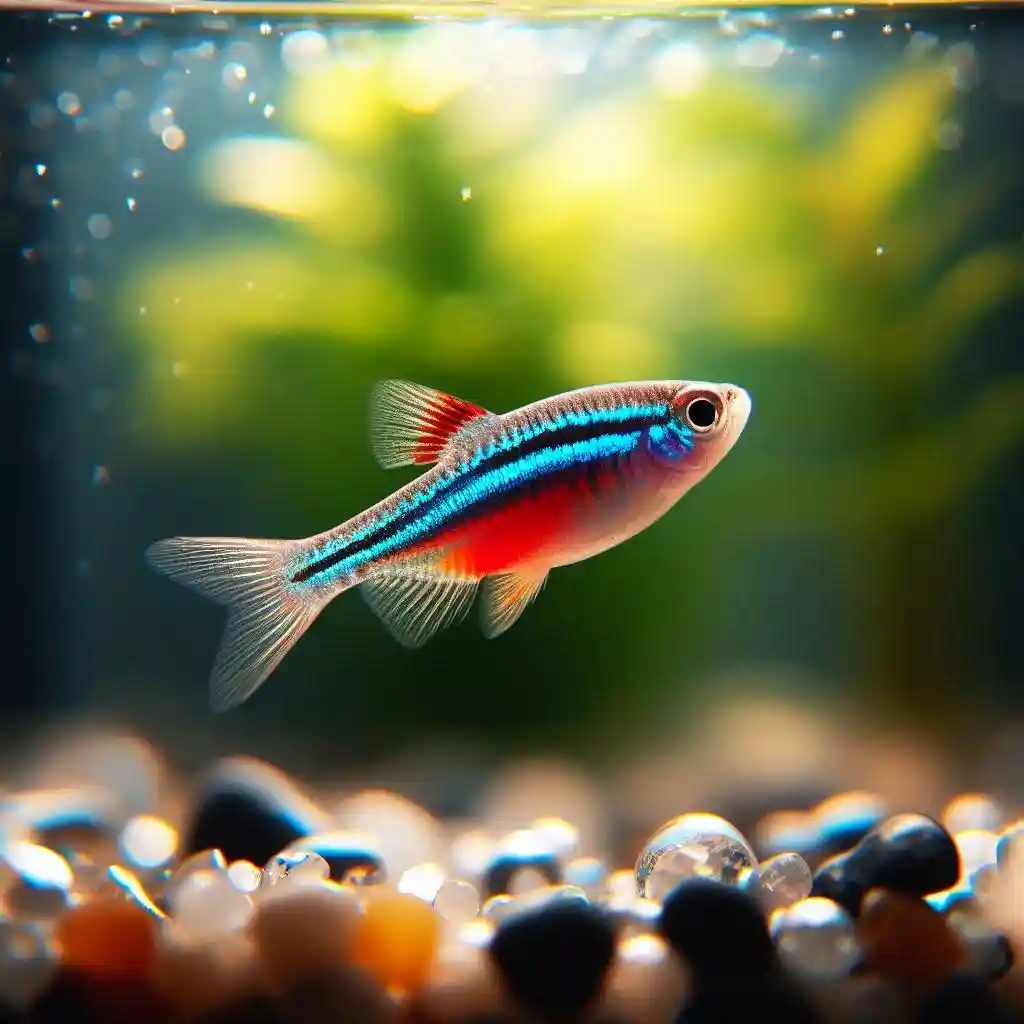Are Neon Tetras Aggressive Fish? Uncovering the Truth
Are Neon Tetras Aggressive Fish? When it comes to community aquariums, few fish are as popular as the Neon Tetra. With their iridescent blue and red stripes, they’re a stunning addition to any tank.
But despite their beauty, many aquarists have heard whispers that Neon Tetras can be aggressive. Is it true? Are these tiny fish more than just a pretty face?
In this post, we’ll explore their behavior, social structure, and tank requirements to give you the lowdown on whether or not these fish are truly aggressive.
Are Neon Tetras Aggressive Fish? – A Quick Guide
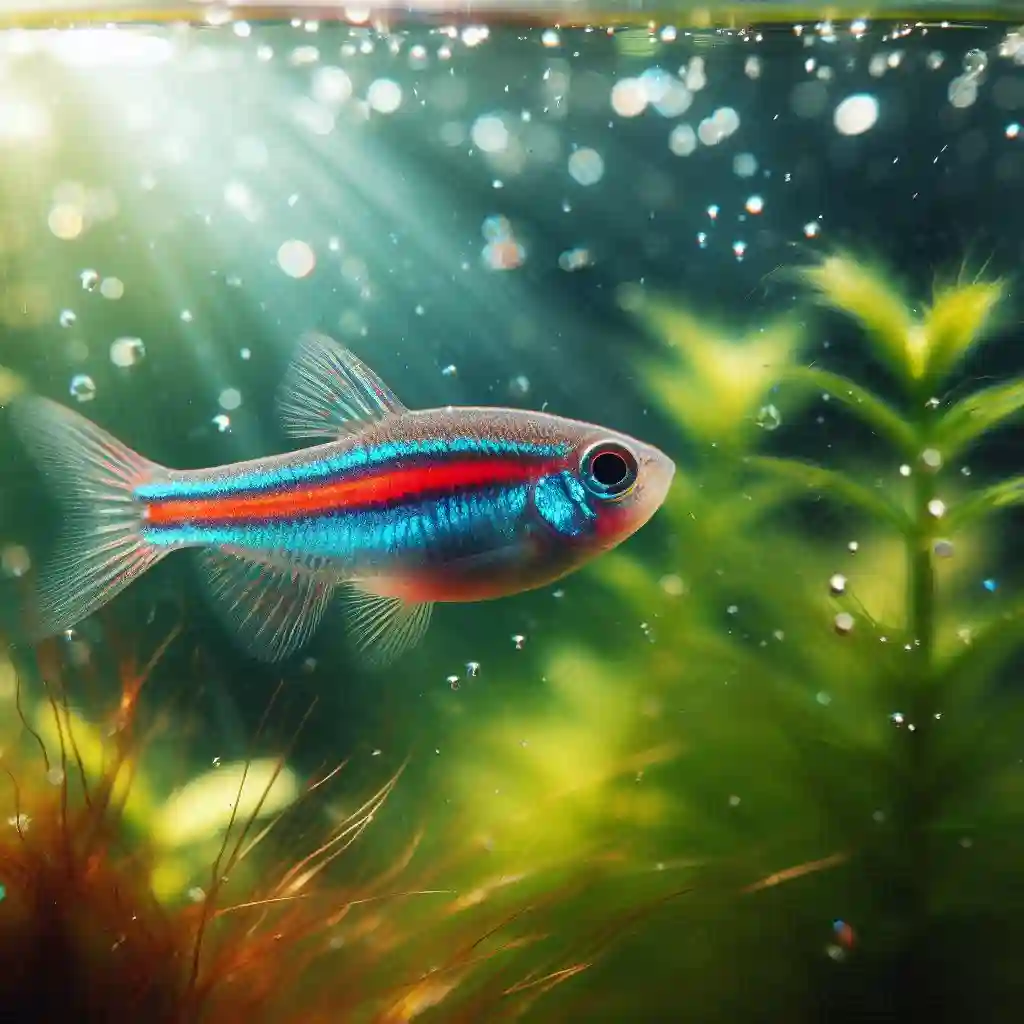
Are Neon Tetras Aggressive Fish?
- Myth: Neon Tetras are aggressive fish.
- Reality: Neon Tetras are peaceful fish that thrive in the company of others.
Factors that Can Contribute to Aggression:
- Poor water quality
- Inadequate hiding places
- Incompatible tankmates
- Overcrowding
- Poor diet
Tips for Reducing Aggression:
- Provide plenty of hiding places
- Maintain good water quality
- Introduce peaceful tankmates
- Avoid overcrowding
- Offer a varied diet
The Myth of Aggression: Debunking the Rumors
The truth is, Neon Tetras are not naturally aggressive fish. In their natural habitat, they school in large groups, feeding on small invertebrates and plankton. They are not territorial and do not engage in aggressive behavior towards each other.
So, where does this myth of aggression come from? There are a few possible explanations:
- Inadequate tank size: Neon Tetras require a minimum tank size of 10 gallons to thrive. In smaller tanks, they may become stressed and exhibit aggressive behavior.
- Poor water quality: Neon Tetras are sensitive to water quality and can become stressed if the water is not properly maintained. This stress can lead to aggressive behavior.
- Incompatible tankmates: Neon Tetras are schooling fish and prefer to be kept in groups. If they are kept with incompatible tankmates, they may become stressed and exhibit aggressive behavior.
- Misidentification: Some aquarists may mistake the natural behavior of Neon Tetras for aggression. For example, they may see a Neon Tetra chasing another fish and assume it’s aggression when in reality, it’s just a natural part of their schooling behavior.
Neon Tetra Behavior: What to Expect
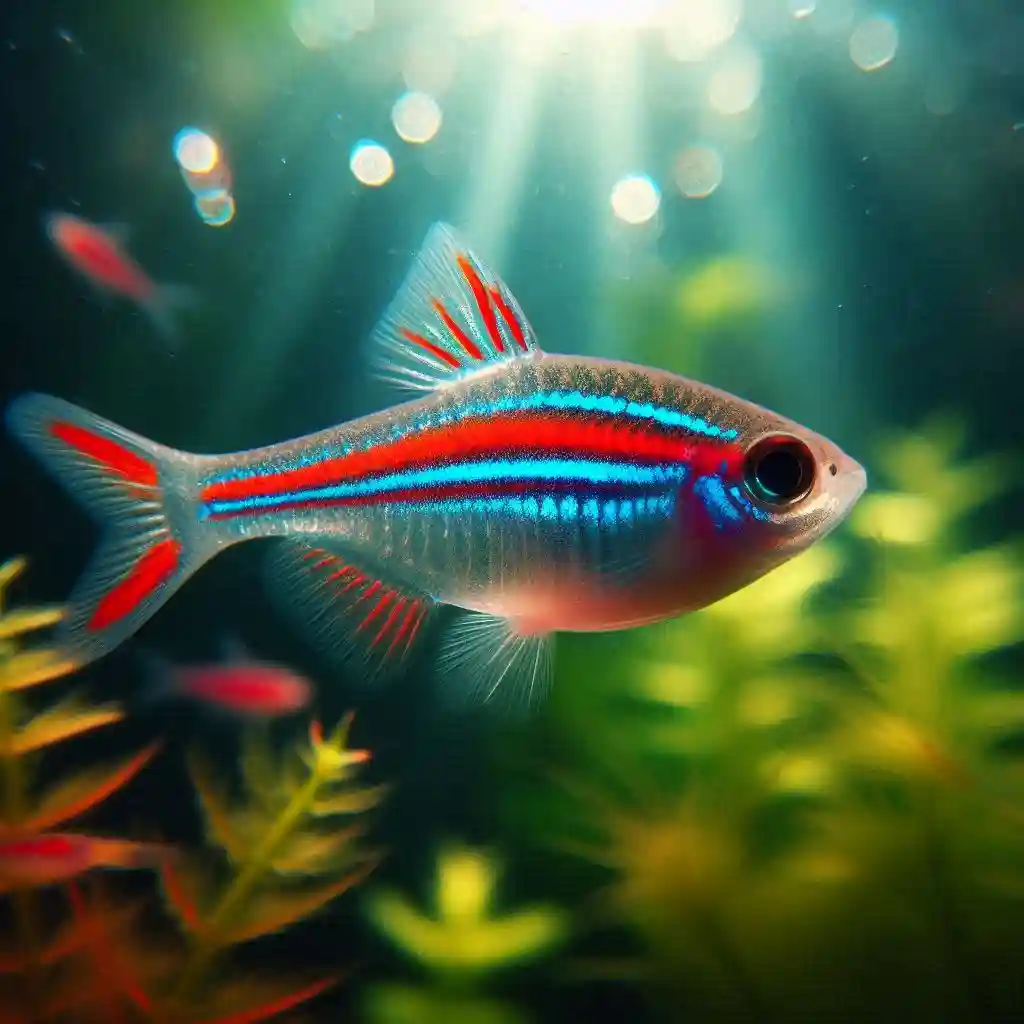
Schooling: The Safety of Numbers
Neon Tetras are schooling fish, which means they thrive in the company of others. In the wild, they school in large groups to increase their chances of finding food and avoiding predators. In captivity, they still exhibit this schooling behavior, swimming together in a shimmering, iridescent mass.
Active Swimmers
Neon Tetras are active swimmers, darting back and forth through the water column. They’re most active at night, when they feed on small invertebrates and plankton. During the day, they tend to rest in hiding places, such as plants or decorations.
Communication: Clicks, Chirps, and Whistles
Neon Tetras communicate with each other through a series of clicks, chirps, and whistles. They use these sounds to coordinate their schooling behavior and warn each other of potential threats.
No Territoriality Here
Despite their reputation for aggression, Neon Tetras are not territorial. They don’t defend specific areas of the tank and are happy to swim freely throughout the aquarium.
Social Butterflies
Neon Tetras are social animals that thrive in the company of others. They’re best kept in groups of at least 6-10 individuals to ensure they receive the social interaction they need.
Hiding and Seeking: A Game of Hide-and-Seek
Neon Tetras are naturally skittish and will often hide in plants, decorations, or other hiding places. They’re also skilled at hiding in plain sight, using their transparent bodies to blend in with their surroundings.
The Social Structure of Neon Tetras: Schooling and Dominance
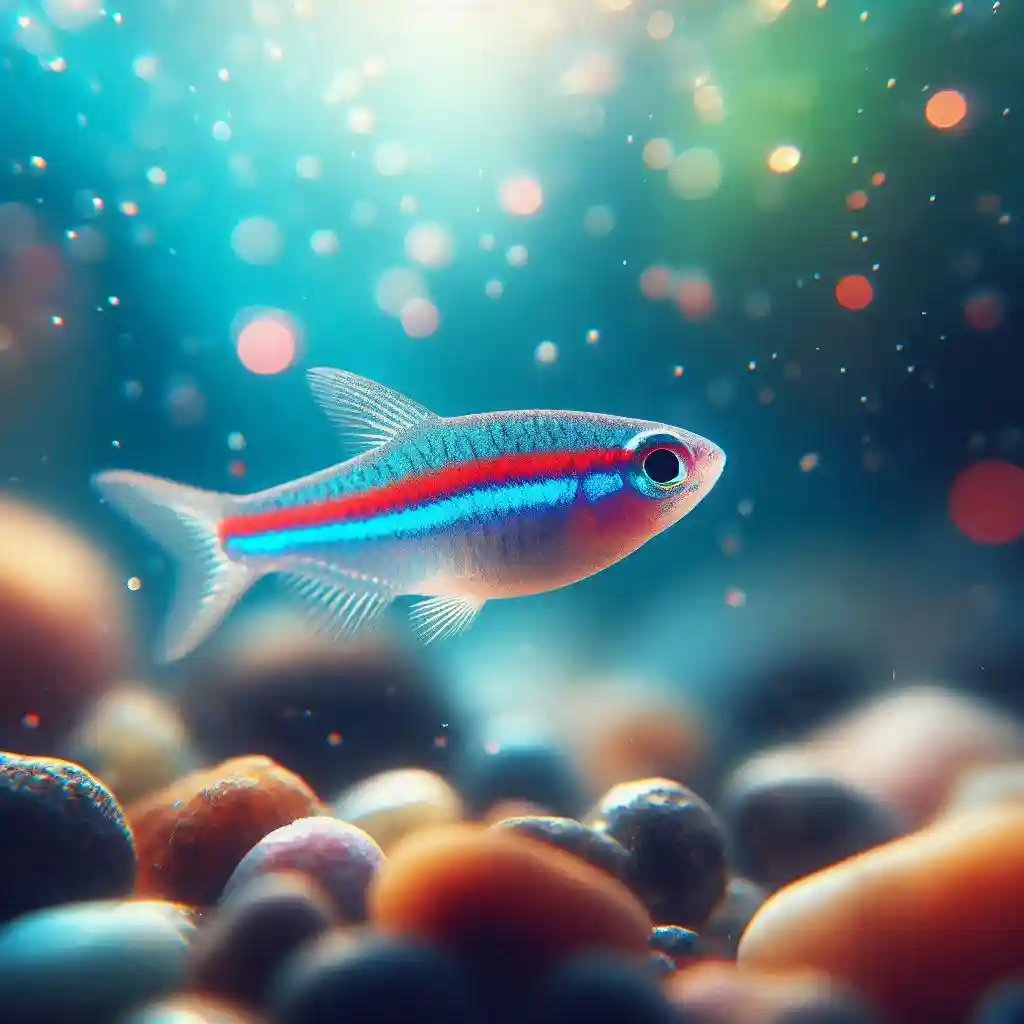
Schooling Behavior
In the aquarium, Neon Tetras will often form a school, swimming together in a cohesive unit. This schooling behavior is an adaptation to help them avoid predators and find food in the wild. In captivity, it’s a natural behavior that helps them feel secure and comfortable.
Dominance Hierarchy
While Neon Tetras don’t exhibit aggressive behavior, they do establish a dominance hierarchy within their school. This hierarchy is based on factors such as size, age, and social status. Larger, older fish tend to dominate smaller, younger ones, but this dominance is not aggressive or violent.
Pecking Order
Within the school, Neon Tetras establish a pecking order, with dominant fish leading the way and subordinate fish following. This pecking order is not fixed and can change over time as fish grow and mature.
Subordinate Fish
Subordinate fish will often defer to dominant fish, allowing them to take priority when feeding or claiming resources. However, this deference is not a sign of fear or aggression, but rather a natural response to the social hierarchy.
Benefits of Schooling
Schooling behavior has several benefits for Neon Tetras, including:
Improved foraging: Schooling allows Neon Tetras to cover more area and find food more efficiently.
Enhanced predator avoidance: Schooling makes it harder for predators to target individual fish.
Social interaction: Schooling provides Neon Tetras with social interaction and stimulation.
Tank Requirements: The Key to a Harmonious Coexistence
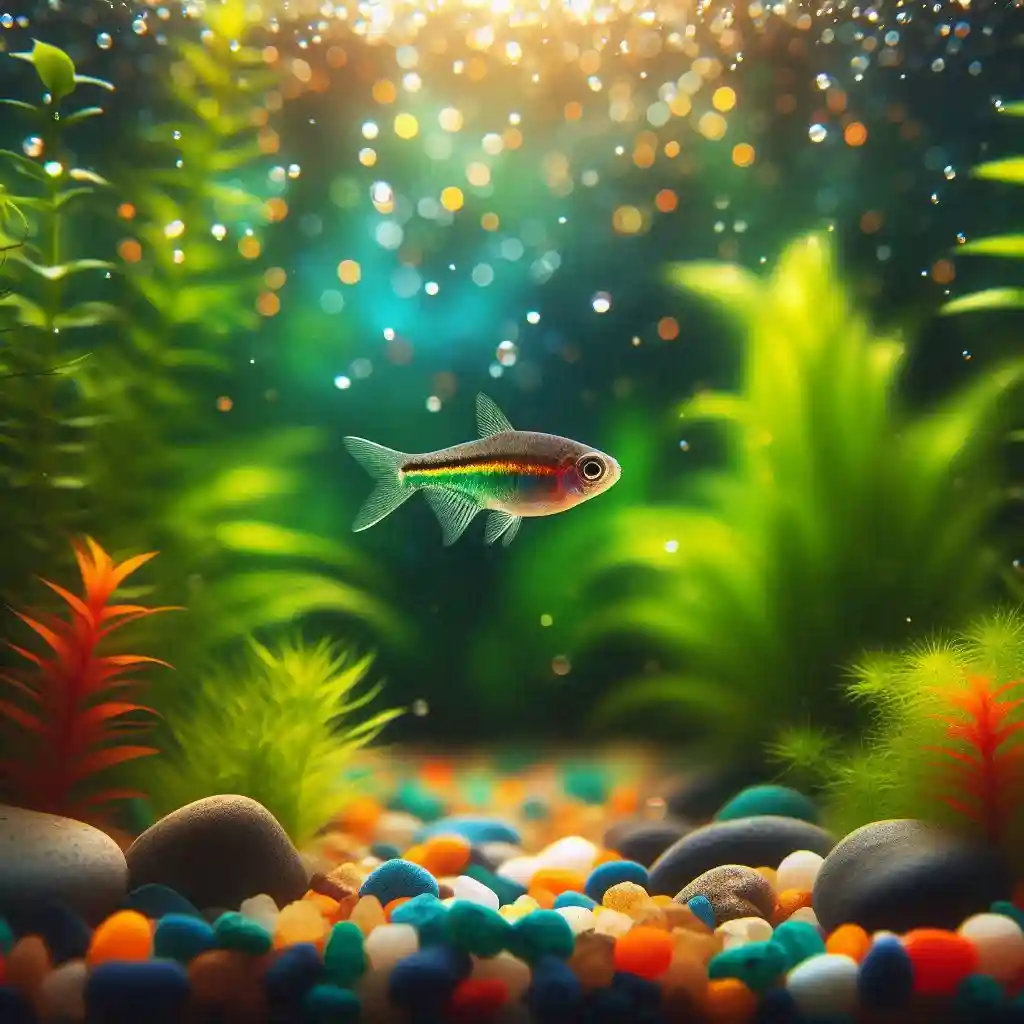
Schooling Behavior
In the aquarium, Neon Tetras will often form a school, swimming together in a cohesive unit. This schooling behavior is an adaptation to help them avoid predators and find food in the wild. In captivity, it’s a natural behavior that helps them feel secure and comfortable.
Dominance Hierarchy
While Neon Tetras don’t exhibit aggressive behavior, they do establish a dominance hierarchy within their school. This hierarchy is based on factors such as size, age, and social status. Larger, older fish tend to dominate smaller, younger ones, but this dominance is not aggressive or violent.
Pecking Order
Within the school, Neon Tetras establish a pecking order, with dominant fish leading the way and subordinate fish following. This pecking order is not fixed and can change over time as fish grow and mature.
Subordinate Fish
Subordinate fish will often defer to dominant fish, allowing them to take priority when feeding or claiming resources. However, this deference is not a sign of fear or aggression, but rather a natural response to the social hierarchy.
Benefits of Schooling
Schooling behavior has several benefits for Neon Tetras, including:
- Improved foraging: Schooling allows Neon Tetras to cover more area and find food more efficiently.
- Enhanced predator avoidance: Schooling makes it harder for predators to target individual fish.
- Social interaction: Schooling provides Neon Tetras with social interaction and stimulation.
The Role of Food and Feeding Habits in Neon Tetra Aggression
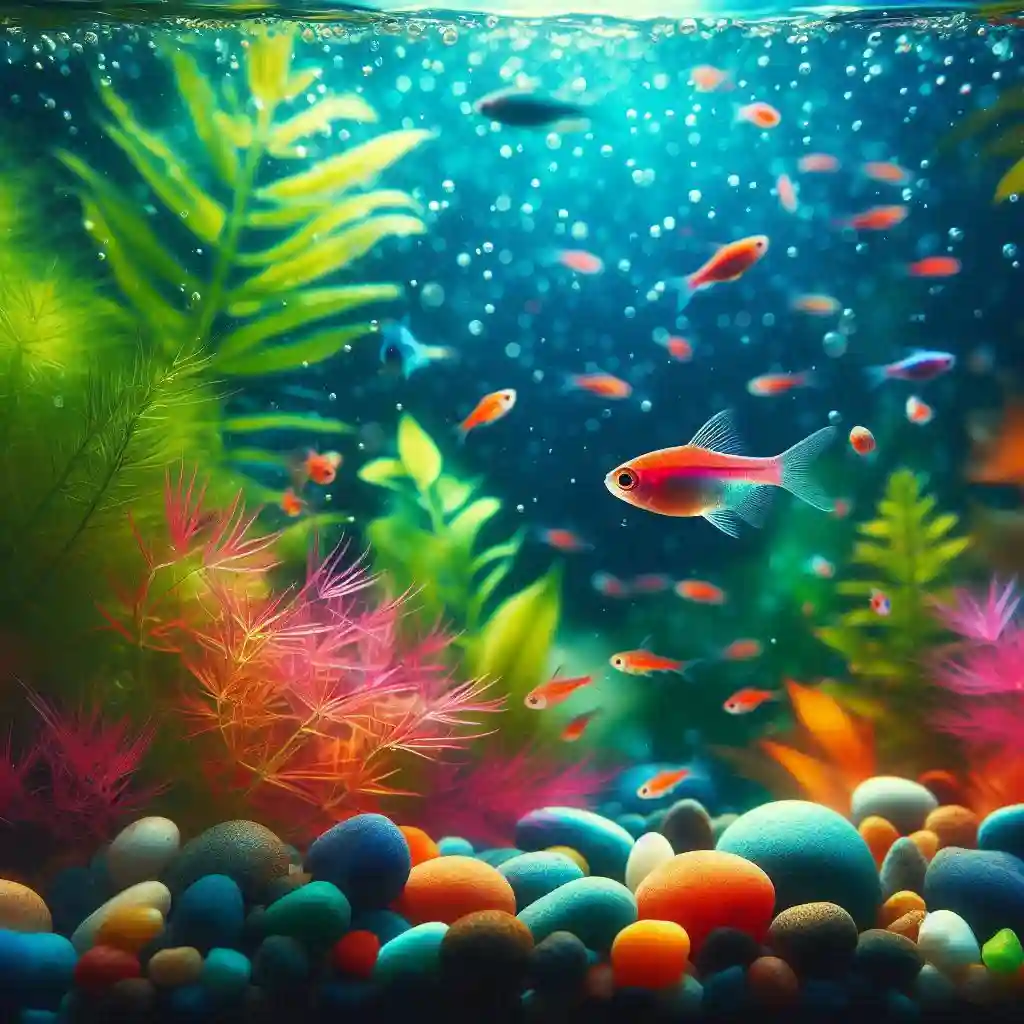
Competition for Food
In the aquarium, Neon Tetras may compete for food, especially if they’re not fed adequately or if the tank is overcrowded. This competition can lead to stress, which can manifest as aggressive behavior.
Food Quality and Variety
The quality and variety of food can also impact Neon Tetra behavior. A diet lacking in nutrients or variety can lead to stress and aggression. On the other hand, a varied and nutrient-rich diet can help reduce stress and promote peaceful behavior.
Feeding Frequency and Timing
The frequency and timing of feeding can also impact Neon Tetra behavior. Overfeeding or feeding too frequently can lead to stress and aggression, while underfeeding or feeding too infrequently can lead to competition and aggression.
Food-Related Aggression
In some cases, Neon Tetras may exhibit food-related aggression, such as fin-nipping or chasing, when competing for food. This behavior is often a result of inadequate feeding or poor water quality.
Tips for Reducing Food-Related Aggression
To reduce food-related aggression in Neon Tetras, follow these tips:
- Feed a varied and nutrient-rich diet: Provide a mix of commercial flake or pellet food, live or frozen foods, and vegetables.
- Feed in moderation: Avoid overfeeding or underfeeding, and adjust feeding frequency and timing based on the tank’s needs.
- Provide plenty of hiding places: Ensure that your Neon Tetras have plenty of places to hide and feel secure.
- Maintain good water quality: Regularly test and maintain good water quality to reduce stress and aggression.
The Impact of Tankmates: Can Other Fish Trigger Aggression?
The Importance of Compatible Tankmates
Neon Tetras are a peaceful species that thrive in the company of other peaceful fish. However, if they’re kept with aggressive or fin-nipping fish, they can become stressed and exhibit aggressive behavior.
Fin-Nipping Fish
Fish like Tiger Barbs, Serape Tetras, and some species of Catfish are known to be fin-nippers. These fish may see the long, flowing fins of Neon Tetras as a tempting snack, leading to fin-nipping and stress.
Aggressive Fish
Aggressive fish like Cichlids, Angelfish, and some species of Catfish can also trigger aggression in Neon Tetras. These fish may see Neon Tetras as competition or a threat, leading to chasing, fin-nipping, or even attacks.
Peaceful Tankmates
On the other hand, peaceful tankmates like Harlequin Rasboras, Zebra Danios, and Corydoras Catfish can help create a harmonious aquarium environment. These fish are less likely to trigger aggression in Neon Tetras and can even help to calm them down.
Tips for Choosing Compatible Tankmates
When choosing tankmates for your Neon Tetras, remember to:
- Research, research, research: Learn about the behavior, diet, and habitat requirements of potential tankmates.
- Choose peaceful fish: Opt for peaceful fish that are compatible with Neon Tetras.
- Avoid fin-nippers and aggressive fish: Steer clear of fish that are known to be fin-nippers or aggressive.
- Introduce fish slowly and carefully: Introduce new fish slowly and under close observation to prevent stress and aggression.
The Importance of Water Quality and Maintenance in Reducing Aggression
The Impact of Poor Water Quality
Poor water quality can lead to a range of problems, including:
- Ammonia and nitrite poisoning: Toxic compounds that can cause stress and aggression.
- pH swings: Sudden changes in pH can cause stress and aggression.
- Water hardness: High water hardness can cause stress and aggression.
The Importance of Regular Water Changes
Regular water changes are essential for maintaining good water quality and reducing aggression in Neon Tetras. Water changes help to:
- Remove toxins: Remove ammonia, nitrite, and other toxins that can cause stress and aggression.
- Maintain stable water parameters: Help maintain stable pH, water hardness, and other water parameters.
- Reduce stress: Help reduce stress and promote a peaceful aquarium environment.
Tips for Maintaining Good Water Quality
To maintain good water quality and reduce aggression in Neon Tetras, remember to:
- Perform regular water changes: Change 10-20% of the tank water weekly.
- Monitor water parameters: Regularly test for ammonia, nitrite, and nitrate levels.
- Maintain a stable pH: Avoid sudden changes in pH.
- Avoid overfeeding: Avoid overfeeding, which can lead to poor water quality.
Conclusion: The Verdict on Neon Tetra Aggression
In conclusion, Neon Tetras are not inherently aggressive fish, and their behavior is largely influenced by their environment and tankmates.
By providing a well-maintained tank with plenty of hiding places, a varied diet, and peaceful tankmates, you can reduce stress and aggression in Neon Tetras. Regular water changes, stable water parameters, and a clean tank are also essential for promoting a peaceful aquarium environment.
By debunking the myths surrounding Neon Tetra aggression and understanding their behavior, you can create a harmonious and thriving aquarium environment for these beautiful fish.
FAQs

Hello, I’m Aria Cooper, the heart and soul behind Swimmy Buddies. As a devoted fish aficionado, I share my aquatic adventures and expertise to inspire your own underwater explorations. 🐠🌊

